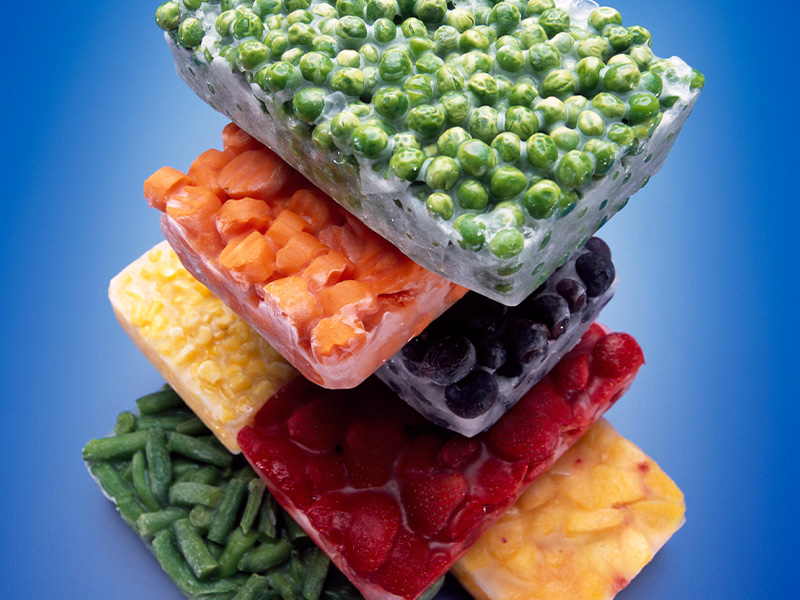The canned and frozen foods you should stock up on
Canned and frozen foods can hold their own in terms of efficiency and nutritional value. Check out these clever ways to weave them into your meal plans.
There’s no question that fresh fruit and vegetables, as well as fresh fish, are good for you but in many cases, their canned and frozen equivalents give these foods a good run for their money.
“In fact, frozen and tinned products can often be more nutritious than a lot of fresh options,” dietitian Milly Smith says.
“For one thing, the benefit of frozen fruit and vegetables is that they’re ‘snap frozen’, which means they’re picked and frozen straight away, holding in all of that nutritional value.”
Fresh produce, on the other hand, is often stored for long periods before it’s sold and loses nutrients when left in the fridge for a while, Milly adds.
Canned and frozen food can be better for us in other ways, too.
For example, research shows that freezing blueberries and canning tomatoes improve the bioavailability of the beneficial antioxidants in both fruits when compared to fresh varieties.
Benefits of canned and frozen foods
The nutritional value of canned and frozen foods isn’t the only perk you’ll enjoy – by eating more of these products, you’ll also:
Save time
“The ease of opening a can of diced tomatoes or cooked lentils, or a packet of frozen stir-fry vegetables, shouldn’t be underestimated,” Milly says.
“When you’re busy and time-poor, shortcuts like that can make all the difference.”
Save money
There’s no denying the cost of food has risen lately, with the price of fresh produce jumping significantly since June 2021.
“All kinds of food products have increased in price recently,” Milly says.
“But compared to fresh produce, canned and frozen food options still offer so much more value for money.”
Reduce food waste
New research from Australia’s Fight Food Waste Cooperative Research Centre supports the benefit of leaning on canned and frozen produce for this purpose.
“The main thing we’ve learnt from the data is that Australians do waste a lot of food,” research co-lead Dr Gamithri Karunasena says.
“It’s equivalent to nearly $1000 per person, per year.”
One of the biggest ways that households can avoid food wastage?
Research findings show it’s reducing the volume of fresh vegetables that get binned – and one way to do that is buying canned and frozen produce with a long shelf life instead.
“This research paints the fullest picture yet of our current behaviours around food waste in the home, and also points towards the simple steps that can be taken by Australians to reduce their food waste,” Dr Karunasena says.
- Waste not, want not: 6 ways to reduce food waste
What to look for in canned and frozen foods
These food products can make a great addition to your pantry and freezer, but there are a few things to be mindful of in order to get the maximum health kick.
“The main thing to watch out for with canned fish and vegetables is the sodium content,” Milly says.
Products with less than 400mg of sodium per 100g are good, but those with less than 120mg per 100g are best.
“As for tinned fruit, choose products in natural juices rather than syrup, and rinse the juice off before you eat the fruit,” Milly suggests.
“When it comes to frozen products, choose those free of seasonings or sauces or, in the case of fish, crumbs or batter – these don’t take away from the nutritional value of the food, but they can add extra calories.”
- Delicious and nutritious: Vegan Pie with Tomatoes and Red Kidney Beans
Clever ways to use canned and frozen foods
The list of ways to use canned and frozen food is long, but these suggestions are a great place to start.
Add to meat sauces
“Throwing a tin of lentils into a bolognaise is an inexpensive way to add more protein if you want to use less meat or make the meal go further,” Milly says.
Include in salads
“Tinned corn or tinned legumes like chickpeas are a quick and easy way to bulk out a salad,” she suggests.
Swap out fresh fish
“Frozen fish is going to deliver the same healthy fats that we get by eating a fresh piece of fish,” Milly explains.
“The same goes for canned fish like tuna, sardines and salmon; as well as being mindful of the sodium content, choose varieties in either spring water or olive oil.”
Blend into smoothies
“Frozen berries and mango, as well as greens like frozen spinach, are really handy to have in the freezer when you want to make a quick but nutrient-dense smoothie for breakfast,” she says.
Select any time
“This is where frozen fruit and vegetables really shine,” Milly says. “They’re not seasonal, so you can choose your favourite options all year round.”
Written by Karen Fittall.





